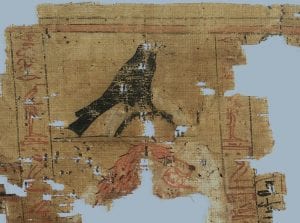Written by UCL Archaeology Graduate, John Bilton
As I relaxed in my scratch-built sauna in the middle of the West Sussex countryside, I decided there were worse things in life than studying archaeology. It was a week into my first year and I was at ‘Primtech’, a four-day retreat every new undergrad at UCL’s Institute of Archaeology (IoA) goes on to get a hands-on introduction to early technologies (flint knapping, pottery making, bronze casting, etc.), and to get to know the people they will spend the next three years studying with. I had made the sauna that afternoon with another first-year and a couple of second-years, who came to Primtech as supervisors, out of some sticks, tarpaulin and burnt flint. It was a nice way to wind down after a morning of landscape walking.
70 days of fieldwork
IoA students need to get used to being outside, because the undergrad course requires them to complete 70 days of fieldwork. What this actually involves varies hugely: I spent six weeks in Greece and Macedonia, examining various museums and archaeological sites; a friend of mine spent a month excavating in Israel. Another spent two weeks in Uganda. The IoA is Britain’s largest and most well-regarded archaeological department: its archaeologists conduct fieldwork all over the globe, on some of the most famous archaeological sites on Earth.
Easter Island
A good example of the IoA’s global reach is its work in Rapa Nui, known more colloquially as Easter Island, home to the colossal stone ‘moai’ sculptures. The ‘Rapa Nui Landscapes of Construction Project’, led by Professor Sue Hamilton (Director of the IoA), works with Rapa Nui elders and students to provide resources and training to help them present Rapa Nui’s past, and extended a bursary to bring Rapa Nui archaeology students to the UK to join in the IoA’s field training course.
As well as engagement, the Project seeks to develop a new understanding of how the moai fit into the wider landscape of the island. The Project is carrying out an excavation of the Puna Pau quarry, the source of many of the pukao (‘hats’) that some of the moai wear – large, squat cylinders made of a coarse, dark red lava. It is also looking to unify strands of investigation that have thus far remained isolated, such as the ‘ahu’, stone ceremonial platforms upon which the moai once stood, and transport roads. The Project’s central theme is the way construction of the moai unified the island, with the resources, locations and construction elements that went into making the moai linking the different areas of Rapa Nui, from the quarries where they were constructed to the roads that they were transported on and their final destinations.
 Terracotta Army
Terracotta Army
Another example of UCL’s global focus is its work with the Terracotta Army. The IoA is undertaking a research project in collaboration with the Museum of Emperor Qin Shihuang’s Mausoleum to research the Terracotta Army, a group of 2,000 warrior statues crafted over 2,000 years ago as a part of the tomb of Qin Shihuang, the first Emperor of China. The Terracotta Warriors were an undeniable symbol of the unimaginable wealth, military power and artistic achievement of the Qin Empire. Each of the individually crafted warriors was equipped with state-of-the-art bronze weapons, some so well preserved that they would still be lethal today. The assemblage includes over 40,000 bronze arrowheads, as well as swords, lances, crossbow triggers and more.
Since 2006, the IoA has been collaborating with the Museum to transfer students and specialists between Britain and China, and to investigate the logistics of technology and labour organisation behind the construction of the Terracotta Army. They have analysed the distribution of the Warriors and their weapons, and have learned a great deal about the way the Qin military was organised. For example, they have discovered a great deal about Qin battle formations: lower-status robed warriors stood on the front lines, followed by armoured soldiers and a smaller number of officers or generals towards the rear. Crossbowmen were placed primarily along the front and flanks of the army, and chariots were placed at the core.
The IoA also works closer to home. Undergraduate students can take part in the Thames Discovery Programme, a community archaeology project run by UCL. The Thames Discovery Programme involves IoA archaeologists and students engaging the public about the fascinating archaeology of the River Thames, home to the debris of London’s almost 2,000 year history, from Roman pottery to Tudor jewellery and the remnants of Victorian warships. People are led on surveying walks along the banks of the river. Public lectures are held in local archaeological societies, in community centres and at academic conferences and museums. The project has been featured on television several times, including on a special episode of Time Team.
University Archaeology Day
So, if travel, community engagement, the opportunity to be trained in advanced scientific and analytical methods and the chance to build your own sauna in the middle of the English countryside appeal to you, come and check out the IoA’s ‘University Archaeology Day’ on June 22. It’s an event for prospective students, parents and teachers to learn about the many archaeology programmes available in the UK, to hear about some of the latest cutting-edge archaeological research, and to discover the huge range of career opportunities a degree in archaeology can lead to. We’ll have representatives from most of the UK’s top archaeology departments, as well as a range of organisations that work with and employ archaeologists.
Find out more about University Archaeology Day, including details on how to register:
Want to know more about how you can turn an archaeology degree into a career? Read this article from UCL News.
![]() Written by Natasha Downes, Media Relations Manager, UCL
Written by Natasha Downes, Media Relations Manager, UCL
 Close
Close


 Terracotta Army
Terracotta Army As part of the
As part of the  Set among many enchanting and unusual artefacts, a timely post-Halloween showing of Kenneth Anger’s Lucifer Rising felt perfectly at home at
Set among many enchanting and unusual artefacts, a timely post-Halloween showing of Kenneth Anger’s Lucifer Rising felt perfectly at home at